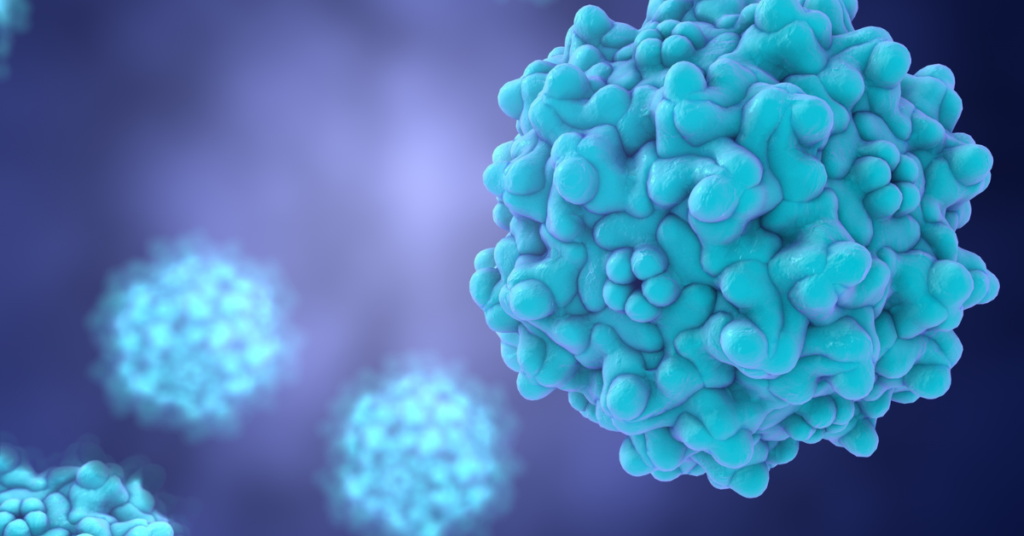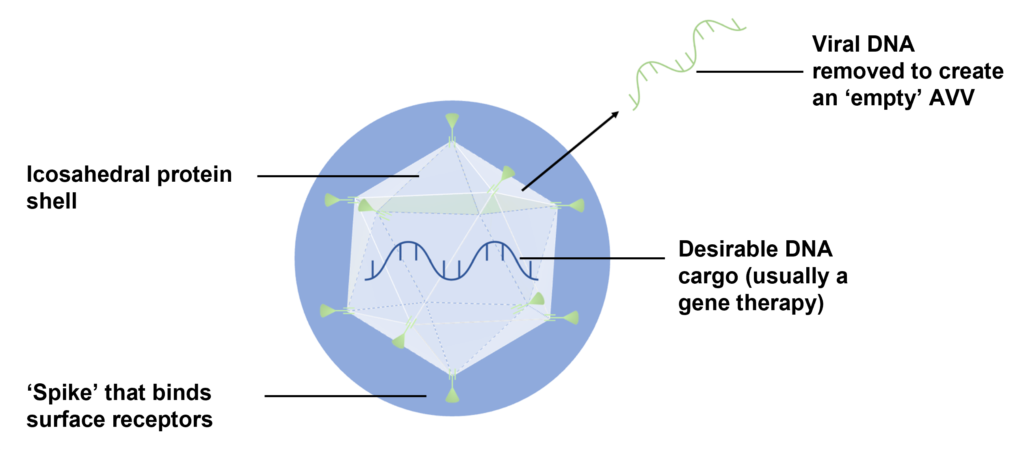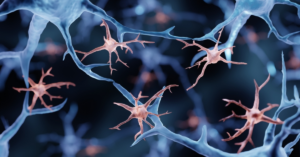
Written by Paige Blair
Edited by Larissa Nitschke & Celeste Suart
What are adeno-associated viruses?
Adeno-associated viruses, also known as AAV, are a type of virus that infects humans without causing a serious disease response. These viruses possess the unique ability to deliver DNA to specific cells in living organisms. Adeno-associated viruses cannot replicate on their own, which stops them from being able to grow and cause an infection in the body. Consequently, these viruses have garnered a lot of attention from the scientific community for their use in gene therapy. This includes developing gene therapy for different kinds of ataxia.
How do adeno-associated viruses work?
Adeno-associated viruses consist of a small single-stranded DNA genome surrounded by a protein shell in the shape of an icosahedron which protects and delivers the DNA cargo to its destination in the body (Figure 1). To use adeno-associated viruses for gene therapy, scientists modify the virus to ensure that it does not become part of the human genome. Scientists then replace the part of the viral DNA with new desirable DNA sequences, which can be used in a variety of applications.

Figure 1: Illustration describing the components of an AAV showing the protein shell, spikes, and DNA cargo. Image created by Paige Chandran Blair.
When designing adeno-associated virus delivery systems, scientists manipulate the protein shell to deliver DNA cargo, usually a type of gene therapy, to the specific cell types they want their treatment to go to. The adeno-associated virus figures out which cells to go to using the ‘spikes’ outside the protein shell. The spikes interact with specific molecules known as glycans on the surface of cells of interest. These spikes and surface molecules function as a “lock-and-key,” with the virus’s spikes only fitting with the molecules on certain cells. This allows the virus to selectively enter specific cells. Lastly, the adeno-associated virus is brought inside the cell where it releases its DNA cargo.
What are the limitations of adeno-associated viruses?
Adeno-associated viruses do have their limitations. First, older versions of adeno-associated viruses had the potential to cause a strong immune reaction in the body, which in extreme cases caused serious side effects. However, research into adeno-associated viruses has significantly improved over the past twenty years. Modern adeno-associated viruses are generally considered to be a safe and effective delivery system. Second, adeno-associated viruses must be carefully designed to only target specific cells. This preciseness given by the spike-surface molecule interaction is very important. However, the adeno-associated virus can interact with any cell type with these surface molecules. Therefore, adeno-associated viruses must be designed to only target specific cells to limit unexpected side effects. Continued research is needed to make adeno-associated viruses as safe as possible.
What are adeno-associated viruses used for?
A major application of adeno-associated viruses is gene therapy. Gene therapy is the process of using nucleic acids, like RNA or DNA, to treat a genetic disorder. These nucleic acids can silence or inactivate a mutant gene, repair or turn off the mutated gene, or sometimes express a healthy copy of a gene. Gene therapies hold tremendous potential for monogenic disorders, diseases caused by a single mutated gene. These include multiple types of spinocerebellar ataxia, including SCA1, SCA2, SCA3, SCA5, SCA6, SCA7, and SCA17. For gene therapies to successfully get into specific cells, a delivery system like adeno-associated viruses is required.
A second major application of adeno-associated viruses is in the development of models of neurological diseases like ataxia. Scientists use adeno-associated viruses to deliver genes with specific disease mutations into the brains of animal models like mice. Then the researchers can study what happens when a specific mutation occurs.
Overall, adeno-associated viruses present an exciting opportunity for ataxia research, both as tools to learn more about ataxia and develop treatments.
If you would like to learn more about adeno-associated viruses, take a look at this resource by AskBio.

Snapshot: What is Articulation?
Articulation refers to the ability to produce speech sounds using the tongue, lips, jaw, and the roof of your mouth. All of these organs are also known as articulators. The Read More…


Snapshot: What is Resonance?
In speech-language pathology, the term resonance refers to nasality in speech. In other words, how nasal a person’s speech sounds. When someone is congested, they likely sound hyponasal, or not Read More…


Snapshot: What are Microglia?
The Immune System of the Brain Though the brain is a powerful computational tool, it is also a sensitive and delicate organ. For this reason, it requires specialized protection. This Read More…









